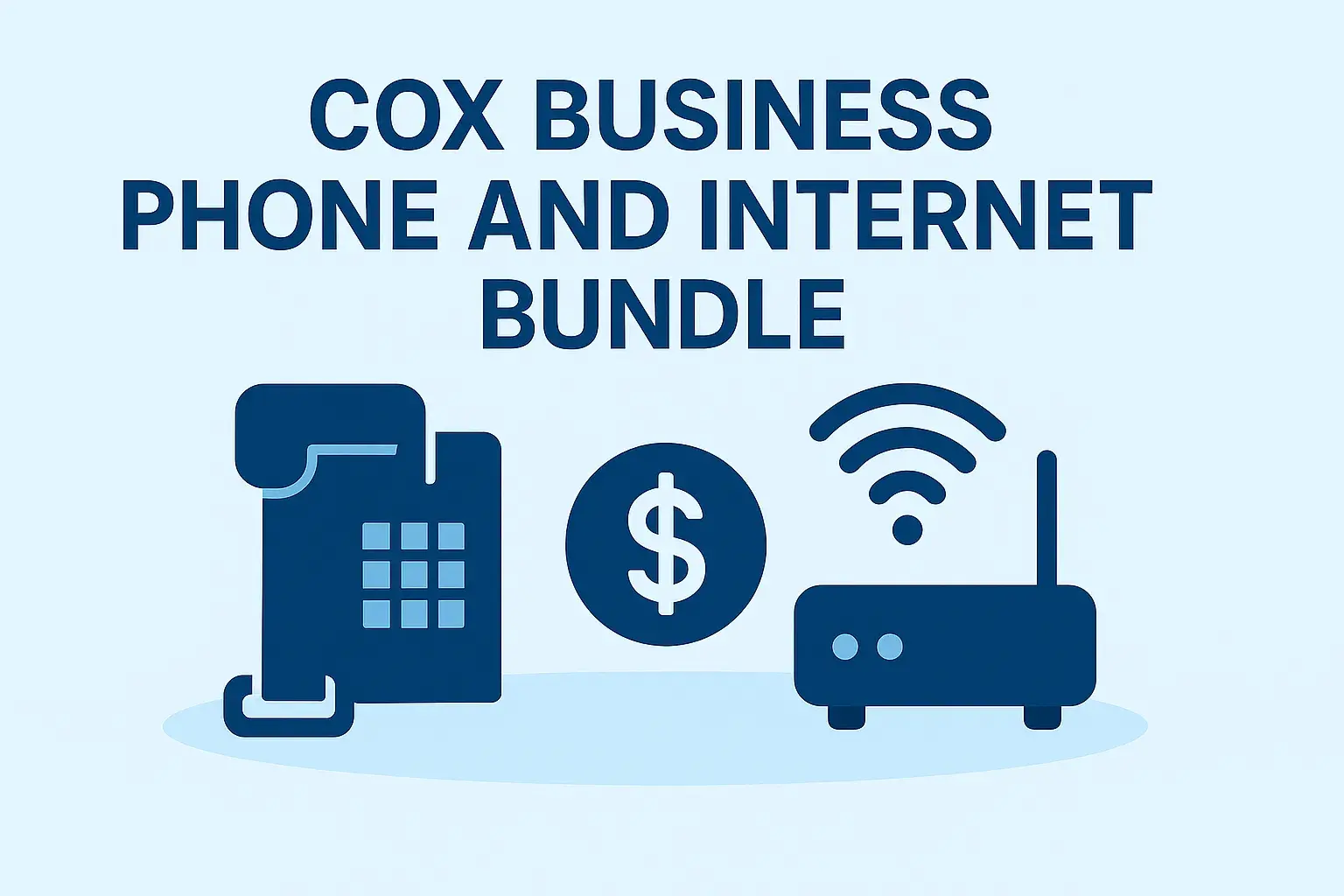
Introduction: Navigating the Evolving Landscape of Quantum Fiber Equipment Returns
As Quantum Fiber continues its rapid expansion, understanding the intricacies of equipment returns is paramount for both consumers and providers. This guide delves into the latest trends and cutting-edge innovations poised to redefine the Quantum Fiber equipment return process throughout 2025, ensuring a smoother, more efficient experience for all stakeholders involved.
The Current State of Quantum Fiber Equipment Returns (2025)
In 2025, the landscape of Quantum Fiber equipment returns is characterized by a blend of established procedures and emerging efficiencies. The core components of a typical return process involve the deactivation of service, the retrieval of specific hardware (such as the Quantum Fiber Gateway, ONT, and any associated power adapters or Ethernet cables), and the secure packaging and shipment back to the provider or a designated processing center. While many users are familiar with the basic steps, the underlying operational frameworks are undergoing significant transformation.
Providers are increasingly investing in robust logistics networks and digital platforms to manage the influx of returned equipment. This includes developing clearer communication channels with customers regarding return timelines, packaging instructions, and potential restocking fees for unreturned or damaged items. The focus is shifting from a purely transactional exchange to a more integrated part of the customer lifecycle, aiming to minimize friction and maximize asset recovery.
Key aspects of the current state include:
- Standardized Return Kits: Many providers now supply pre-paid shipping labels and specialized packaging designed to protect sensitive fiber optic equipment during transit.
- Online Return Portals: Digital interfaces are becoming standard, allowing customers to initiate returns, track shipments, and access FAQs without needing direct customer service intervention.
- Collection Points: Partnerships with retail stores or dedicated drop-off locations are emerging as convenient alternatives to mail-in returns for some customers.
- Asset Tracking: Advanced inventory management systems are in place to track returned equipment from the point of collection through inspection, refurbishment, or disposal.
- Customer Education: Providers are enhancing their efforts to educate customers on which equipment needs to be returned and the consequences of not doing so.
However, challenges persist. Inconsistent packaging, delays in shipping, and a lack of clear instructions can still lead to customer frustration. Furthermore, the environmental impact of returned electronics remains a significant consideration, driving the need for more sustainable return and recycling practices. The year 2025 is a pivotal moment where these existing structures are being challenged and improved upon by new technologies and strategic shifts.
Key Trends Shaping Quantum Fiber Equipment Returns in 2025
Several overarching trends are significantly influencing how Quantum Fiber equipment is returned in 2025. These trends are driven by technological advancements, evolving consumer expectations, and a growing emphasis on sustainability and operational efficiency. Understanding these shifts is crucial for anyone involved in the Quantum Fiber ecosystem.
1. Enhanced Digital Integration and Automation
The most prominent trend is the deepening integration of digital technologies throughout the return process. This goes beyond simple online portals. In 2025, we are seeing a rise in:
- AI-Powered Chatbots and Virtual Assistants: These tools are becoming more sophisticated, capable of guiding customers through the return process, answering complex queries about specific equipment models, and even initiating the return request automatically based on customer input.
- Automated Return Label Generation: Systems are being developed to instantly generate personalized return labels based on customer account information and the specific equipment being returned, reducing manual errors.
- Smart Packaging Solutions: While still nascent, there's a growing interest in smart packaging that might include embedded tracking or self-sealing mechanisms, simplifying the customer's role.
- Predictive Analytics for Logistics: Providers are using data to predict return volumes and optimize shipping routes, ensuring timely collection and processing of equipment.
This automation not only streamlines the customer experience but also significantly reduces operational costs for providers by minimizing human intervention in repetitive tasks.
2. Focus on Circular Economy Principles
Sustainability is no longer an afterthought but a core strategic driver. The circular economy model, which emphasizes reuse, repair, and recycling, is gaining significant traction in the telecommunications sector. For Quantum Fiber equipment returns, this translates to:
- Increased Refurbishment and Resale: Providers are investing more in testing and refurbishing returned equipment to put it back into service, reducing the need for new manufacturing.
- Advanced Recycling Programs: For equipment that cannot be refurbished, specialized e-waste recycling partners are being engaged to ensure responsible disposal of materials, recovering valuable components.
- Extended Product Lifecycles: By optimizing repair and refurbishment processes, providers aim to extend the usable life of their hardware, further reducing waste.
- Transparency in Sustainability Efforts: Consumers are increasingly demanding transparency regarding a company's environmental impact. Providers are starting to communicate their efforts in managing returned equipment sustainably.
This trend is driven by both regulatory pressures and a growing consumer consciousness about environmental responsibility.
3. Personalized and Proactive Customer Communication
Customer experience remains a critical differentiator. In 2025, return processes are becoming more personalized and proactive.
- Tailored Return Instructions: Based on the customer's account and the specific equipment they are returning, instructions are becoming more precise, reducing confusion.
- Proactive Notifications: Customers receive timely updates via SMS, email, or app notifications regarding the status of their return, from initiation to receipt and processing.
- Incentivized Returns: Some providers are exploring incentives, such as small discounts on future services or loyalty points, for prompt and proper equipment returns.
- Simplified Deactivation and Return Bundling: The process of service deactivation and equipment return is being more tightly integrated, so customers understand both steps need to be completed.
This proactive approach aims to reduce customer anxiety and minimize the likelihood of unreturned equipment due to forgetfulness or confusion.
4. Data-Driven Optimization of Reverse Logistics
The "reverse logistics" – the process of moving goods from their final destination back up the supply chain – is becoming a highly data-driven operation.
- Real-time Tracking and Visibility: Advanced tracking systems provide end-to-end visibility of returned equipment, from the customer's doorstep to the processing facility.
- Performance Metrics Analysis: Providers are closely monitoring metrics such as return rates, processing times, refurbishment success rates, and shipping costs to identify bottlenecks and areas for improvement.
- Demand Forecasting for Refurbished Equipment: Data analytics help providers forecast the demand for refurbished equipment, optimizing their refurbishment efforts.
- Fraud Detection: Sophisticated data analysis can help identify fraudulent return activities, protecting providers from losses.
This data-centric approach allows for continuous improvement and cost reduction in the complex process of managing returned assets.
5. Integration with Device Lifecycle Management
Equipment returns are increasingly viewed as an integral part of the overall device lifecycle management strategy.
- End-of-Life (EOL) Planning: Providers are better integrating return processes into their EOL strategies for hardware models, ensuring a smooth transition for customers and efficient asset recovery.
- Inventory Management Synergy: Data from returned equipment feeds directly into inventory management systems, informing purchasing decisions and stock levels for new and refurbished devices.
- Security and Data Wiping: Robust protocols for securely wiping customer data from returned devices are becoming standard, ensuring privacy and compliance.
This holistic approach ensures that the return process is not an isolated event but a connected component of the broader technology management strategy.
Innovations to Watch in Quantum Fiber Equipment Returns for 2025
Beyond the overarching trends, specific innovations are emerging that promise to revolutionize Quantum Fiber equipment returns in 2025. These are the technologies and approaches that will set leading providers apart.
1. Blockchain for Enhanced Traceability and Security
While still in its early stages for consumer electronics returns, blockchain technology offers significant potential for enhancing transparency and security.
- Immutable Record Keeping: Each step of the return process – from pickup to inspection and final disposition – can be recorded on a blockchain, creating an unalterable audit trail. This can help resolve disputes and improve accountability.
- Secure Ownership Transfer: Blockchain can securely track the ownership and status of equipment throughout its lifecycle, including its return and potential refurbishment.
- Smart Contracts for Automated Processes: Smart contracts could automate payments or trigger actions based on verified return conditions, reducing manual oversight.
Imagine a scenario where a customer can scan a QR code on the return box, and the blockchain immediately verifies the equipment's serial number and its intended return destination, ensuring authenticity and preventing fraud.
2. Advanced IoT for Real-time Equipment Monitoring
The Internet of Things (IoT) is poised to play a more active role in managing equipment before it's even returned.
- Remote Diagnostics: IoT sensors within the Quantum Fiber Gateway or ONT could potentially report their status and even pre-emptively flag issues that might necessitate a return, allowing for proactive customer outreach.
- Usage Analytics: While respecting privacy, aggregated data from IoT devices could inform providers about equipment lifespan and performance trends, influencing return and replacement strategies.
- Condition Monitoring: In some advanced scenarios, IoT could monitor the physical condition of equipment in transit, providing alerts for potential damage before it reaches the processing center.
This level of real-time data can significantly improve the efficiency of identifying faulty equipment and managing its journey back.
3. AI-Driven Predictive Maintenance and Return Prediction
Artificial Intelligence (AI) is moving beyond chatbots to more sophisticated predictive capabilities.
- Predicting Equipment Failure: AI algorithms can analyze historical performance data to predict when a piece of Quantum Fiber equipment is likely to fail, allowing for proactive replacement before service disruption. This can influence the timing and necessity of a return.
- Optimized Return Timing: AI can help determine the optimal time to initiate a return based on usage patterns and predicted end-of-life, minimizing the period equipment sits unused in a customer's home.
- Automated Grading of Returned Equipment: AI-powered vision systems could be used to automatically assess the cosmetic and functional condition of returned equipment, speeding up the inspection process.
This predictive power allows providers to manage their hardware inventory more effectively and reduce the costs associated with unexpected equipment failures.
4. Sustainable Packaging Innovations
The environmental footprint of packaging is a growing concern. Innovations in this area for Quantum Fiber returns include:
- Biodegradable and Recycled Materials: A shift towards packaging made from recycled cardboard, biodegradable plastics, and plant-based materials.
- Minimalist Design: Reducing the amount of packaging material used by optimizing box sizes and eliminating unnecessary inserts.
- Reusable Packaging Systems: For areas with high return volumes, providers might explore reusable shipping containers that are collected and refilled, significantly reducing waste.
- Smart Labels: Labels that are easier to remove for recycling or are made from sustainable materials.
These innovations aim to make the physical act of returning equipment more environmentally friendly.
5. Extended Reality (XR) for Guided Returns
Augmented Reality (AR) and Virtual Reality (VR), collectively known as Extended Reality (XR), offer novel ways to guide customers.
- AR Overlays for Packaging: Customers could use their smartphone to scan the equipment, and an AR overlay would guide them on how to disconnect it, pack it, and seal the box.
- VR Training for Technicians: While not directly for consumers, VR can be used to train technicians who handle the inspection and refurbishment of returned equipment, ensuring consistency and accuracy.
- Interactive Troubleshooting: In some cases, XR could guide customers through troubleshooting steps before a return is initiated, potentially resolving issues without the need for a physical return.
This immersive technology can demystify the return process for less tech-savvy users and ensure that equipment is packed correctly the first time.
6. Advanced Analytics for Refurbishment and Lifecycle Management
The data generated from returned equipment is becoming more sophisticated.
- Component-Level Analysis: Instead of just assessing the whole device, providers can analyze the failure points of individual components within returned equipment. This data informs future hardware design and manufacturing quality control.
- Predictive Refurbishment Needs: By analyzing the condition of returned devices, providers can predict future demand for specific refurbished models and components.
- Optimized Inventory of Spare Parts: Data on component failures helps providers maintain optimal stock levels of spare parts for refurbishment, reducing costs and turnaround times.
This granular data analysis elevates the return process from mere disposal to a valuable source of product improvement intelligence.
Impact on Consumers: Streamlining the Return Process
The trends and innovations discussed have a direct and tangible impact on Quantum Fiber customers. The primary goal is to make the return process as painless and hassle-free as possible, transforming what was often a point of frustration into a seamless part of the service experience.
1. Reduced Confusion and Effort
With AI-powered assistants, personalized instructions, and clear communication channels, customers will spend less time deciphering what to do. The days of guessing which cables to return or how to package them are diminishing. For example, a customer leaving a Quantum Fiber service area might receive a notification with a link to a short AR video demonstrating exactly how to disconnect and pack their specific Gateway model.
2. Faster Resolution Times
Automation in initiation, label generation, and tracking means that the entire process from deciding to return equipment to confirming its receipt by the provider will be significantly faster. This reduces the window of uncertainty for the customer.
3. Enhanced Transparency and Trust
Features like blockchain traceability or detailed status updates build trust. Customers can see exactly where their returned equipment is and that it's being handled responsibly. This transparency can alleviate concerns about potential fees for unreturned items or the environmental impact of their old hardware.
4. Potential Cost Savings
While not always direct, innovations leading to increased refurbishment and reduced operational costs for providers can indirectly translate to more competitive pricing or fewer punitive fees for customers who follow the return process correctly. Incentivized return programs also offer direct financial benefits.
5. Improved Customer Support
By automating routine inquiries, AI chatbots free up human customer service agents to handle more complex issues. This means that when a customer does need to speak to a person, they are more likely to receive expert assistance.
Consider a scenario where a customer is moving. Instead of a lengthy phone call, they receive an automated SMS reminding them about equipment return, with a link to generate a pre-paid shipping label and schedule a pickup. This proactive and efficient approach respects the customer's time and reduces stress during a busy period.
Impact on Providers: Efficiency and Sustainability Gains
For Quantum Fiber providers, the ongoing evolution of equipment return processes is not just about customer satisfaction; it's about significant operational and strategic advantages.
1. Reduced Operational Costs
Automation, AI-driven support, and optimized logistics drastically cut down on manual labor, call center volume, and shipping expenses. Predictive analytics help avoid unnecessary shipments or expedited fees.
2. Increased Asset Recovery and Value
Improved tracking and inspection processes lead to higher rates of successful refurbishment and resale. This maximizes the residual value of returned equipment, turning what was once a cost center into a potential revenue stream or cost offset.
3. Enhanced Sustainability and Brand Reputation
Embracing circular economy principles and sustainable packaging not only meets regulatory requirements but also significantly enhances a provider's brand image. Consumers are increasingly choosing providers that demonstrate environmental responsibility. This can be a powerful differentiator in a competitive market.
4. Improved Inventory Management
Data from returned equipment provides invaluable insights into product lifecycles, failure rates, and demand for refurbished units. This allows for more accurate forecasting, optimized procurement, and better management of new and used hardware inventory.
5. Greater Data Security and Compliance
Robust data wiping protocols and secure tracking mechanisms ensure compliance with data privacy regulations and reduce the risk of security breaches associated with returned devices. Innovations like blockchain can further bolster this.
6. Streamlined Reverse Logistics
The integration of IoT, AI, and advanced analytics transforms reverse logistics from a reactive necessity into a proactive, data-driven operation. This allows for greater control, predictability, and efficiency in managing the flow of returned goods.
A provider that successfully implements AI-driven return prediction and automated grading can see a significant reduction in processing time per unit. This means that returned equipment can be inspected, tested, and made available for refurbishment or recycling much faster, directly impacting profitability and resource utilization.
Addressing Challenges in Quantum Fiber Equipment Returns
Despite the promising trends and innovations, several challenges remain in the Quantum Fiber equipment return process. Proactive solutions are essential for providers to fully capitalize on the evolving landscape.
1. Customer Non-Compliance and Equipment Loss
Challenge: Customers may fail to return all required equipment, return it late, or damage it during transit due to improper packaging. This leads to unreturned equipment fees and lost assets.
Solutions:
- Clearer, Multichannel Communication: Utilizing SMS, email, in-app notifications, and even AR/VR guides to provide explicit instructions on what to return and how.
- Simplified Return Kits: Providing robust, pre-labeled packaging that is easy to use and offers adequate protection.
- Incentive Programs: Offering small rewards for timely and complete returns.
- Proactive Follow-up: Automated reminders and tracking to prompt customers who haven't initiated a return.
2. High Cost of Reverse Logistics
Challenge: Shipping, handling, inspection, and refurbishment of returned equipment can be expensive, especially with manual processes.
Solutions:
- Automation: Implementing AI chatbots for initiation, automated label generation, and robotic sorting in processing centers.
- Optimized Routing: Using data analytics to plan the most efficient shipping routes for collected equipment.
- Centralized Processing Centers: Consolidating returns to fewer, more efficient locations.
- Predictive Maintenance: Reducing the number of returns due to preventable equipment failures.
3. Environmental Impact and E-Waste Management
Challenge: The growing volume of electronic waste poses environmental risks if not managed properly.
Solutions:
- Prioritizing Refurbishment: Investing in advanced testing and repair capabilities to maximize the reuse of equipment.
- Responsible Recycling Partnerships: Collaborating with certified e-waste recyclers for components that cannot be reused.
- Sustainable Packaging: Adopting biodegradable or recycled materials and minimizing packaging waste.
- Extended Product Lifecycles: Designing more durable equipment and offering robust repair services.
4. Data Security and Privacy Concerns
Challenge: Ensuring that all personal data is securely wiped from returned devices before they are refurbished or recycled.
Solutions:
- Standardized Data Wiping Protocols: Implementing industry-best practices for secure data erasure.
- Tamper-Evident Seals: Using seals on equipment that indicate if data wiping has been attempted or compromised.
- Blockchain for Audit Trails: Providing an immutable record of data wiping procedures for compliance and accountability.
- Employee Training: Ensuring all personnel involved in handling returned equipment are trained on data security protocols.
5. Integration with Existing Systems
Challenge: Integrating new return management technologies with legacy IT infrastructure can be complex and costly.
Solutions:
- API-First Approach: Utilizing Application Programming Interfaces (APIs) to facilitate seamless integration between different software systems.
- Cloud-Based Solutions: Adopting scalable, cloud-native platforms that are easier to integrate and update.
- Phased Rollouts: Implementing new technologies in stages to manage complexity and minimize disruption.
- Strategic Partnerships: Collaborating with technology vendors specializing in reverse logistics and supply chain management.
By proactively addressing these challenges with the innovative solutions being developed, Quantum Fiber providers can ensure that their equipment return processes are not only efficient and sustainable but also customer-centric and secure.
The Future Outlook: Beyond 2025
Looking beyond 2025, the trajectory for Quantum Fiber equipment returns points towards an even more intelligent, automated, and integrated system. The innovations we are seeing now will mature and become standard, paving the way for further advancements.
We can anticipate a future where the "return" process is less of a distinct event and more of a continuous, managed lifecycle. IoT devices will likely provide real-time diagnostics, allowing for proactive service and replacement before a customer even experiences an issue, thus minimizing the need for urgent returns. AI will not only predict failures but also optimize the entire reverse logistics chain, from customer notification to the most efficient disposition of the equipment – whether that's immediate redeployment, refurbishment, or advanced material recovery.
The concept of "ownership" for consumer electronics might also evolve. Instead of outright purchase, many users might opt for service-based models where equipment is essentially leased. In such a scenario, the provider retains full ownership and responsibility for the equipment's lifecycle, including its return, maintenance, and upgrades, making the process entirely invisible to the end-user.
Furthermore, the circular economy will be deeply embedded. Providers will likely operate highly sophisticated refurbishment hubs, capable of quickly assessing, repairing, and re-deploying hardware, making sustainability a core profit driver rather than just a compliance necessity. Data analytics will be so advanced that component-level insights will directly influence future product design, creating a virtuous cycle of continuous improvement.
The physical act of returning equipment might also transform. Imagine smart bins that automatically identify and catalog returned items, or localized, automated collection points. The environmental impact will be minimized through advanced material science in packaging and highly efficient recycling processes that recover nearly all usable materials. Ultimately, the future of Quantum Fiber equipment returns is one of seamless, intelligent, and sustainable management, benefiting both the provider and the planet.
In conclusion, the realm of Quantum Fiber equipment returns is undergoing a profound transformation. By 2025, key trends like enhanced digital integration, a strong focus on circular economy principles, and data-driven optimization are reshaping the process. Innovations such as blockchain, advanced IoT, and AI-powered predictive maintenance are set to revolutionize how equipment is managed post-deployment. These advancements promise a more streamlined, transparent, and sustainable experience for consumers, while offering providers significant gains in efficiency, cost reduction, and environmental stewardship. Embracing these changes is not just about keeping pace; it's about leading the way in responsible and efficient technology management.






